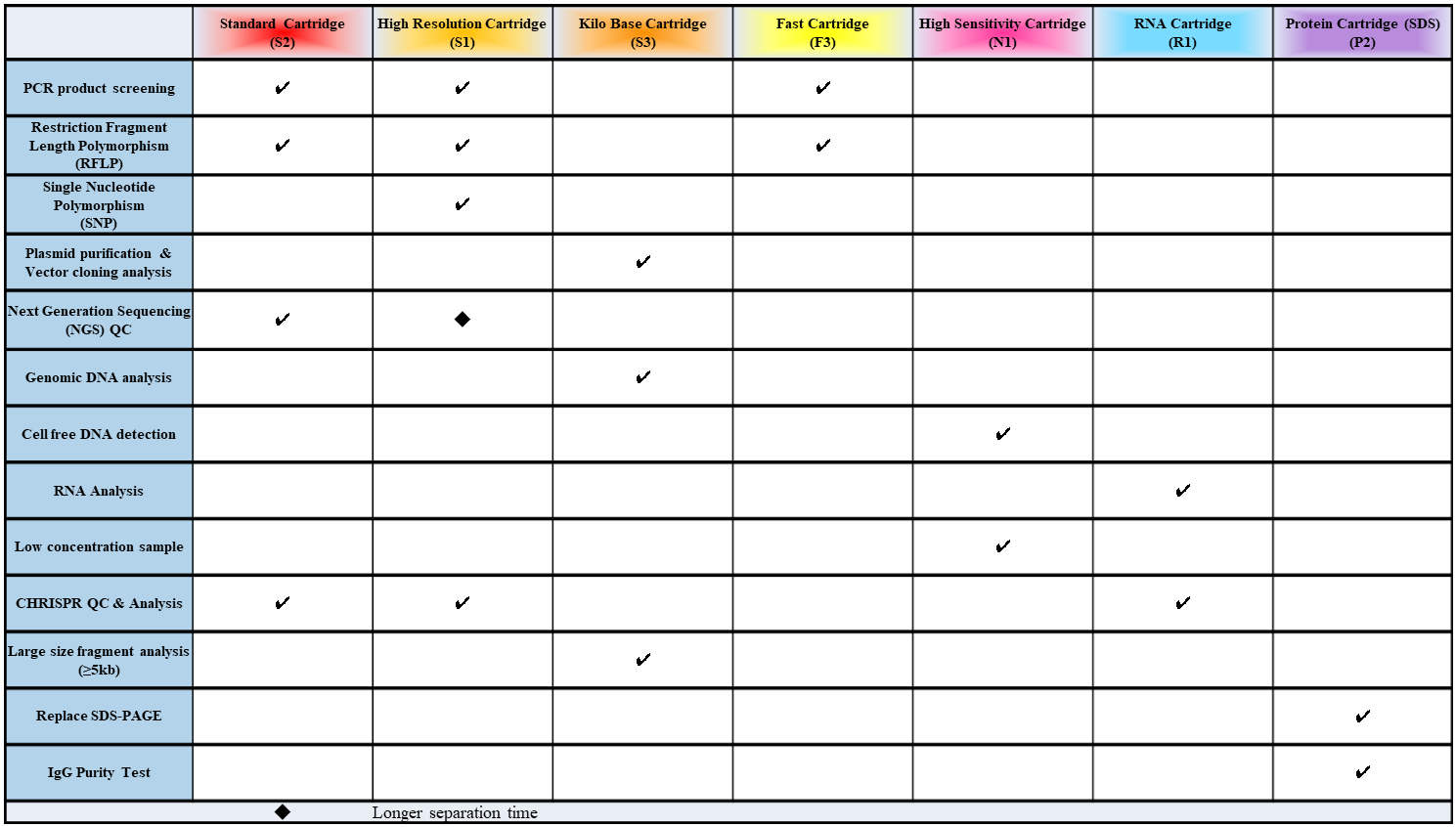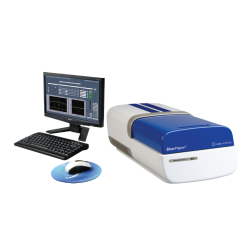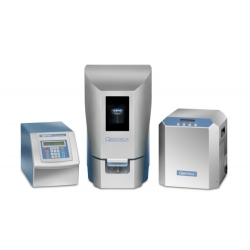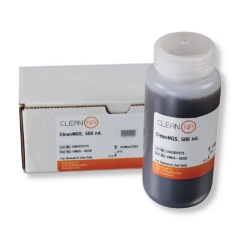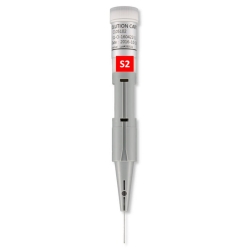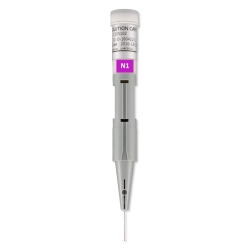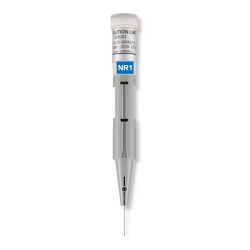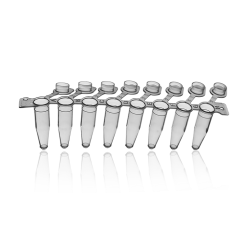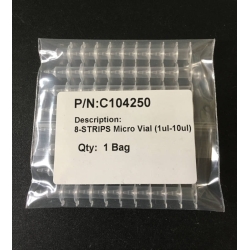Qsep100 Capillary Electrophoresis System
C100100
The Qsep100™ is a small, simple and user friendly bench top capillary gel electrophoresis (CE) system integrated with a high sensitivity LED-induced fluorescence detector with an easily-replaceable gel cartridge and 96-well auto-sampler.
Features :
- Run 1~96 samples in a row
- Resolves fragments from 15 bp to 50,000 bp
- Get resolution down to 2-3 bp for fragments
- Detection starts at 5 pg/μl
Description
![]()
Concept
The Qsep100, with variety of replaceable gel-cartridge kits, is specifically designed for DNA, RNA and Protein analysis providing reproducible and accurate test results in minutes.
The 150 mm long capillary mounted into the cartridge contains a gel matrix that is replenished from the top reservoir of the cartridge automatically between sample runs. The reservoir provides sufficient gel for up to 200 sample injections providing robust and superior results for all kinds of molecular genetic analysis applications.
The Qsep100 comes with Q-Analyzer software which offers a simple-to-use user interface that delivers consistent and high-precision data analysis and data export functions helping users in their daily molecular biology experiments.
Technology
Capillary electrophoresis (CE) is an instrumental approach to gel-electrophoresis, whose greatest advantage is its diverse range of applications. CE technology is commonly utilized by the biotech labs as a reliable, high resolution, and a highly sensitive tool. It is applied for protein, carbohydrate & DNA-related analysis such as oligonucleotides analysis, DNA sequencing, and dsDNA fragments analysis.
.png)
The instrumentation needed to perform capillary electrophoresis is relatively simple. A basic schematic of a capillary electrophoresis system is shown in figure. The system's main components are a sample vial, source and destination vials, a capillary, electrodes, a high-voltage power supply, a detector, and a data output and handling device.
The source vial, destination vial and capillary are filled with an electrolyte such as an aqueous buffer solution. To introduce the sample, the capillary inlet is placed into a vial containing the sample and then returned to the source vial (sample is introduced into the capillary via capillary action, pressure, or siphoning). The migration of the analytes is then initiated by an electric field that is applied between the source and destination vials and is supplied to the electrodes by the high-voltage power supply.
It is important to note that all ions, positive or negative, are pulled through the capillary in the same direction by electroosmotic flow. The analytes separate as they migrate due to their electrophoretic mobility, and are detected near the outlet end of the capillary. The output of the detector is sent to a data output and handling device such as an integrator or computer. The data is then displayed as an electropherogram, which reports detector response as a function of time. Separated chemical compounds appear as peaks with different migration times in an electropherogram.
CE uses separation based on the difference in solute size as the particles migrate through the gel. Gels are useful because they minimize solute diffusion that causes zone broadening, prevent the capillary walls from absorbing the solute, and limit the heat transfer by slowing down the molecules. A commonly utilized gel apparatus for the separation of proteins is capillary SDS-PAGE. It is a highly sensitive system and only requires a small amount of sample.
BiOptic's CE technology is a vertical electrophoresis system with a novel fluorescence detection :
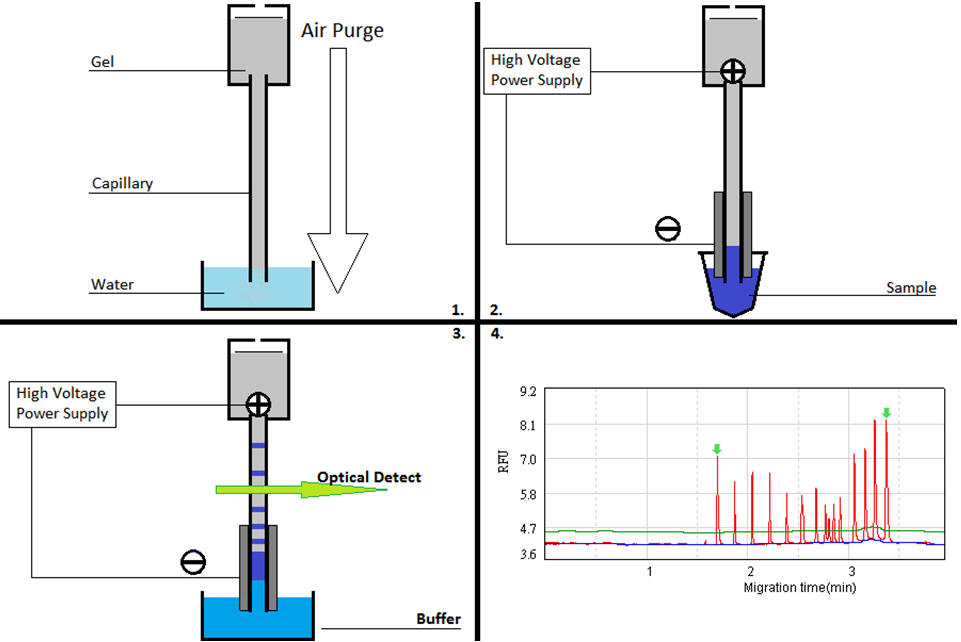
Specifications
| Automated sampling | 1~96 samples |
|---|---|
| Capillary type | Disposable single-channel gel cartridges |
| Analysis time | 2~7 min / sample |
| Resolution | 1~4 bp (<500 bp) |
| Sensitivity | 5 pg/μl |
| Minimum sample volume | 1 μl |
| Light source | Green LED (525 nm) |
| Detection | Fluorescence (590 nm) |
| Separation voltage | 1~15 kV |
| Software | Q-Analyzer |
| Connection | USB |
| Power source | AC 100 - 240V |
| Weight | 15 kg |
| Dimensions (W x D x H) | 38.0 x 30.0 x 40.0 cm |
Applications
- Next-Generation Sequencing (NGS) Library Prep QC
- RNA sample QC
- CRISPR (Clusters of Regularly Interspaced Short Palindromic Repeats)
- cfDNA (Circulating Cell Free DNA ) analysis
- Chromatin immunoprecipitation (ChIP)
- Genomic DNA (gDNA) analysis
- SSR/microsatellites analysis
- Oligonucleotide analysis
- Plasmid analysis
- RFLP (Restriction Fragment Length Polymorphism)
- SNP (Single-nucleotide polymorphism) Genotyping
- Fluorescence detection of protein
- Glycan
- Immuno assay

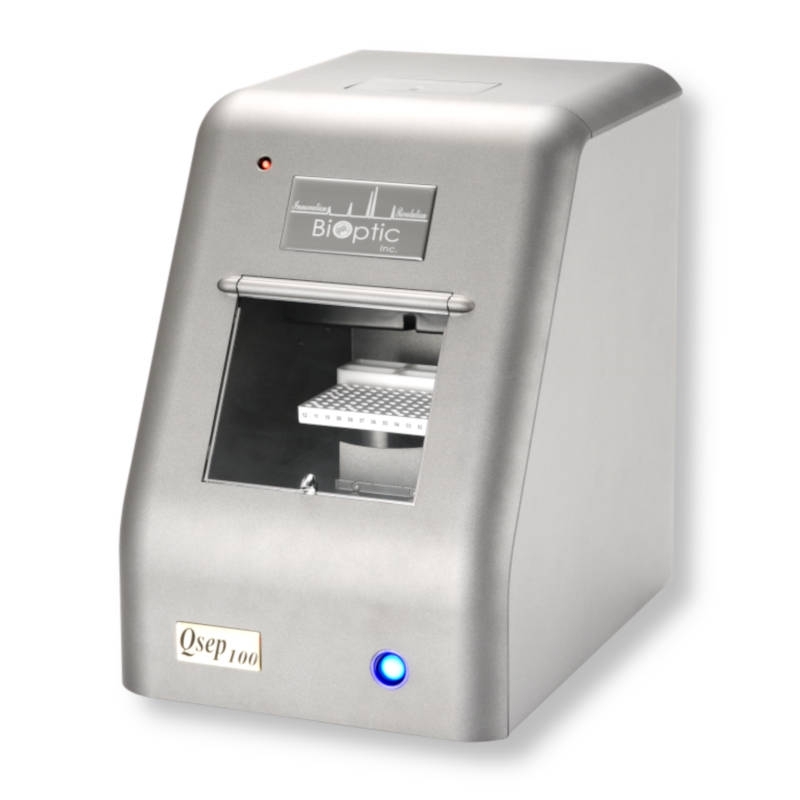


.PNG)
